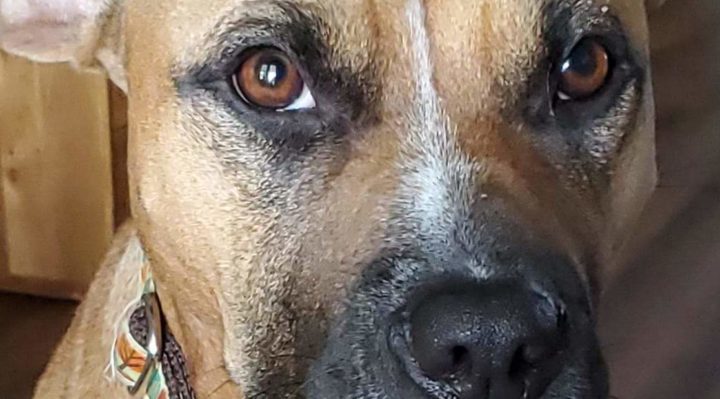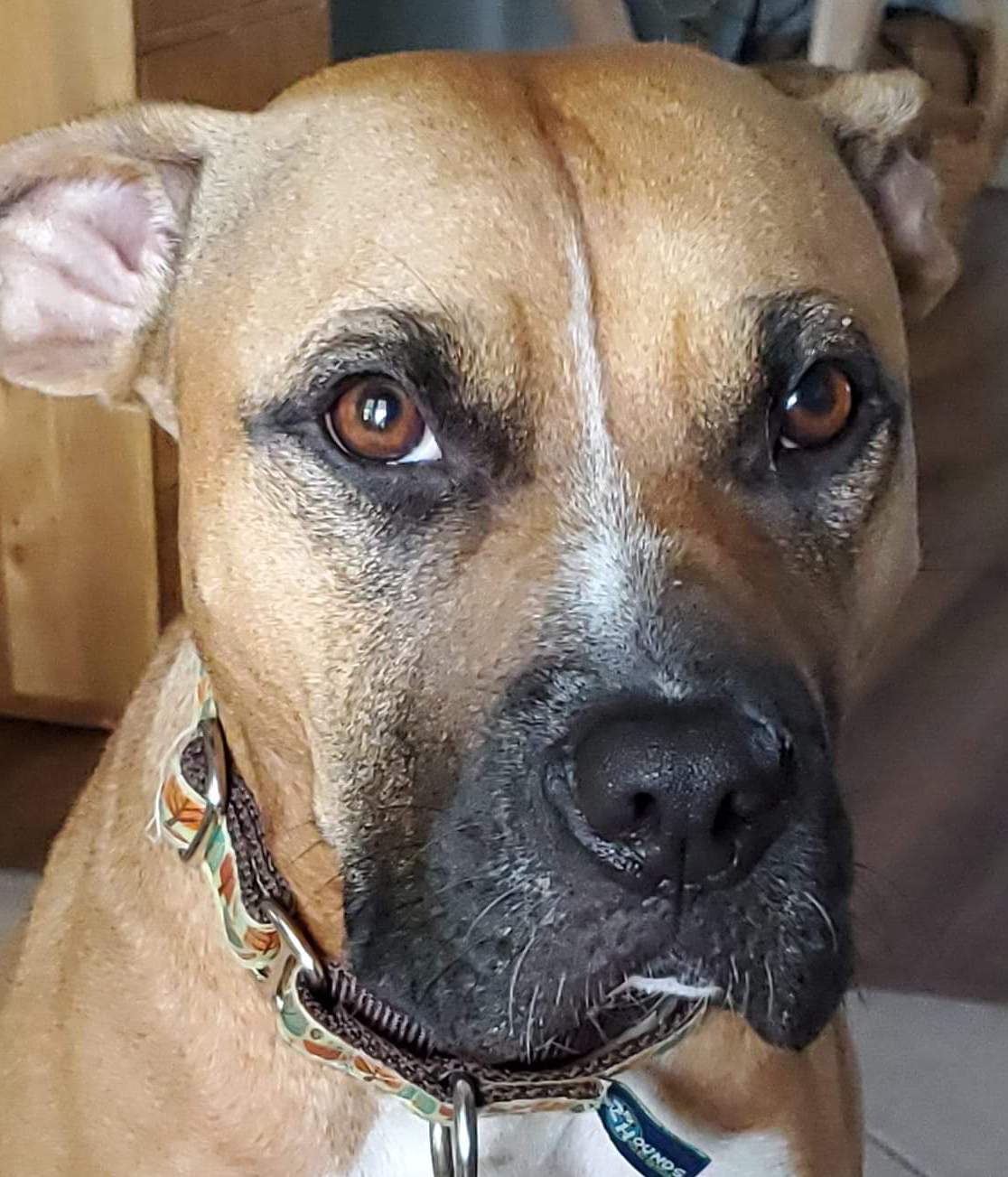
They adopted a greyhound without much research. They were a good home for a dog, the rescue confirmed. They’d had dogs for years, but never a greyhound. They had no idea what to expect.
They were not prepared for a big dog—at least, not for a dog as tall as the new greyhound. They had adopted very quickly after meeting the dog. They hadn’t taken the time to prepare fully before they brought the dog home. Their schedules weren’t cleared. They both had to work. They didn’t have a crate that was “big enough,” so they decided to use an exercise pen to confine the dog when they were out. They set the exercise pen up against the sliders in their family room, they put the dog in it, and they left. When they returned, the dog was in the ex-pen still.
That was not what I would have predicted. I thought the dog would “crash” the pen because he could . . . and why would he not?
If the dog had panicked and pushed against the pen that was confining him, he could easily have escaped it, possibly injuring himself in the process and more likely breaking something else. He could have freed himself to freak out in other rooms. He would have had the run of the first floor. (It was an “open plan” house.)
Instead, he stayed in the ex-pen until they came home, busying himself.
He “self-soothed” effectively. Probably within minutes of being left alone, the dog discovered he could “reach” the nearest physical object to the pen: a panel of a matched set of custom-made full-length curtains that covered the slider window doors in front of which the ex-pen was set up. Easy, peasy! He got a corner of curtain into his mouth. Gnaw, gnaw . . . he chewed the curtain edge. He worked his way up the panel until it came loose and more curtain fell into the pen. Luckily for all, he did not ingest the curtain. Instead, he destroyed it. The middle panel of an expensive made-to-order set.
What were the greyhound’s new owners thinking when they set the ex-pen up?
They were not thinking that their new dog was about to cost them a lot of money.
How did they react when they saw the damage and realized the replacement cost?
They were disappointed. Initially, of course, they were disappointed in the dog. But in that early stage of their relationship with him, to give them gigantic credit, they cut him some slack. They immediately expressed enormous disappointment in themselves. They accepted blame for the incident. They were mad at themselves. The shredded curtain panel became a part of the dog’s story, symbolic of the lessons about him that his new family had yet to learn.

Photo by Joyce Kesling
I read another chapter online this week in the story of a recently adopted rescue dog. This dog is thought to be “not good with other dogs, not good with people” by the human who brought her home. The human questions whether or not the dog was presented fairly by the rescue organization.
To me, it sounds as if the human has decided to keep the dog. It’s been a few weeks since the adoption and the new owner has been with the dog almost constantly. She came up with a plan that she hoped would allow the dog to “chill out” during the times she has to be away, leaving the dog home alone.
She decided to dedicate one room to be the dog’s room. She would leave a radio playing, she would baby-gate the doorway. In case the dog tried to climb or jump over the baby gate, she would put down a “scat mat” on the floor on the dog’s side of the baby gate. (The scat mat zaps the dog with a mild electric pulse when the dog touches it.) In the room, there is a desk and a desk chair.
I don’t know why the human decided it would be better for the dog to be left loose in a room behind a baby gate rather than confined in a crate elsewhere in the house. I think the premise of that choice might be a mistake of anthropomorphizing—assuming the dog would feel about “confinement” exactly as a human would: the more freedom the better. I don’t think that was a valid premise.
I also don’t understand the baby gate—unless, of course, the room does not have a door. If using a baby gate is a necessary part of confining a dog to a room, why use a baby gate that the dog might be able to climb or jump over or defeat in some way if the dog can get close enough to it? How in fact does the use of a scat mat guarantee that the dog will not get close enough to defeat the baby gate? It doesn’t. The dog would be equally as likely to climb or jump the baby gate after having been zapped, to avoid further zapping (getting off the scat mat makes the zapping stop). We just don’t know.
Is an ineffective baby gate with a scat mat to “protect” it a better choice for the dog?
The new owner indicates that the dog “knows” certain things. The dog “knows” that the jangling of the human’s keys indicates the human is going out, which indicates the dog is going with her. When the dog is left in the room behind the baby gate, the dog hears the human’s keys rattling as the human passes by. Then the human does not come to get the dog, and the dog “knows” the human is going to leave without her.
The new owner indicates that the dog “knows” she can see out a window above the desk in the room where she’s been left behind. The human comes back to the room. Through the open door behind the baby gate, she sees that the dog is standing on the desk, looking out the window. To see where she has gone, the new owner says—the dog “knows” to look out the window.
Is the jangling of the keys a trigger for the dog to what might be separation anxiety?
The dog “knows” what the jangling keys mean? I have to ask: Why jangle the keys?
It doesn’t get any better for the dog, I don’t think, because the new owner is angry.
She makes that face, the angry one, the one she says she is sure the dog “knows.” That face means the human is angry: the dog should not be standing on the desk!
I have to ask: How does the dog “know”? It is not the dog’s first time in this room?
Oh, the dog jumped up on the desk before?
Why does the new owner think the dog has learned not to jump up on the desk? Was there actual training successfully completed that would cover this situation?
The new owner is angry because the dog should know not to jump up on the desk. The new owner is certain that her angry face fully informs the dog that she is mad.
The dog “knows”—the human is so very sure—that she is a very naughty dog.
How is doing what she is physically able and willing to do—like climbing on a desk to look out a window to watch her human outside the house—being anything but bold and clever, really?
Why would a dog “know” that climbing on a desk is not something she “should” do?
I’ve checked the standard owner’s manual and, frankly, that information is not in it.
Our pets don’t come preprogrammed with our individual “shoulds,” and we know it.
We forget that, which embarrasses us, so we revert to what’s sadly often our first choice: aversives. We choose aversives first.
We’re shocked. The dog thought of it and we didn’t: we forgot to use our heads. We get angry because the dog made us look bad, even with no witnesses, even just to ourselves. The dog made us look bad in our own eyes and now we’re mad.
We let it show. We get angry and anger is an aversive.
Does anger work to change your dog? Not for the better, I’d say—would you?
We want the behavior, whatever it is, to stop and to stop now.
Anger can suppress the behavior, but it doesn’t tell the dog what to do.
The humans with the newly adopted greyhound might well be grateful that their hasty misplacement of an exercise pen cost them no more than a shredded curtain panel, considering that the dog could have destroyed the first floor of their home instead.
The new owner of the dog that jumped on a desk to look out a window could be gleeful that the dog is willing and able to do physical stunts to see where her human is.
When we’ve had the time to learn more about our new companions—and the time to teach them what we most want them to know—we can all see the humor in these moments as we look back later. We can see the humor in our own reactions at those moments, too.
We have surely said to ourselves, “What was I thinking?”
I guess our pets might answer, “You were thinking at all?”



